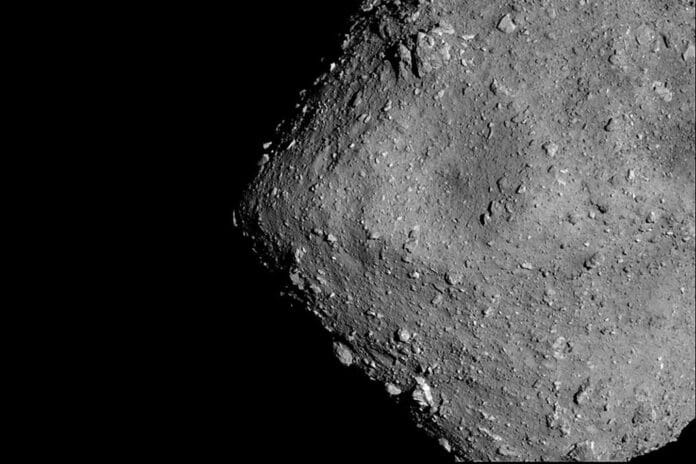According to estimates, our solar system is 4.57 billion years old. According to examinations of ancient meteorites, minerals were produced by chemical reactions with water as far back as 4.5 billion years ago.
UCLA space scientists and colleagues are using mineral samples from the Ryugu asteroid, which Japan’s Hayabusa2 spacecraft collected, to better comprehend the chemical composition of our solar system while it was still in its early stages, more than 4.5 billion years ago.
In a new study, scientists used isotopic analysis. They discovered that carbonate minerals from the asteroid were crystallized through reactions with water, originally accreted to the asteroid as ice in the still-forming solar system, then warmed into liquid.
They assert that these carbonates developed exceptionally early in the solar system’s history, within the first 1.8 million years, and that they serve as a record of the temperature and chemical makeup of the asteroid’s aqueous fluid at that time.
Study co-author Kevin McKeegan, a distinguished professor of Earth, planetary, and space sciences at UCLA, said, “The rocky, carbon-rich Ryugu is the first C-type (C stands for “carbonaceous”) asteroid from which samples have been gathered and studied. What makes Ryugu special, is that unlike meteorites, it has not had potentially contaminating contact with Earth. By analyzing the chemical fingerprints in the samples, scientists can develop a picture of not only how Ryugu formed but where.”
“The Ryugu samples tell us that the asteroid and similar objects formed relatively rapidly in the outer solar system, beyond the condensation fronts of water and carbon dioxide ices, probably as small bodies.”
Ryugu, or a progenitor asteroid from which it may have split off, accreted as a relatively small object, possibly less than 20 kilometers (12.5 miles) in diameter. The researchers’ investigation revealed that Ryugu’s carbonates originated several million years earlier than previously assumed.
The results surprised researchers as most of the models of asteroid accretion would predict assembly over longer periods, resulting in the formation of bodies at least 50 kilometers (more than 30 miles) in diameter that could better survive collisional evolution over the long history of the solar system.
Researchers noted, “any larger asteroid formed very early on in the solar system would have been heated to high temperatures by the decay of large amounts of aluminum-26, a radioactive nuclide, resulting in the melting of rock throughout the asteroid’s interior, along with chemical differentiation, such as the segregation of metal and silicate.”
Ryugu shows no evidence of that, and its chemical and mineralogical compositions are equivalent to those found in the most chemically primitive meteorites, the so-called CI chondrites, which are also thought to have formed in the outer solar system.
McKeegan said, “ongoing research on the Ryugu materials will continue to open a window onto the formation of the solar system’s planets, including Earth.”
“Improving our understanding of volatile- and carbon-rich asteroids helps us address important questions in astrobiology — for example, the likelihood that rocky planets like can access a source of prebiotic materials.”
To date, for the carbonates in the Ryugu samples, the team extended the methodology developed at UCLA for a different “short-lived” radioactive decay system involving the isotope manganese-53, which was present in Ryugu.
Journal Reference
- McCain, K.A., Matsuda, N., Liu, MC. et al. Early fluid activity on Ryugu inferred by isotopic analyses of carbonates and magnetite. Nat Astron (2023). DOI: 10.1038/s41550-022-01863-0
